The Sweet Life: A History of Candy Making in Brooklyn
Once household names, Brooklyn’s candy makers numbered nearly 100 around the turn of the 20th century, and today many of their buildings still stand.

Workers at the Pirika Chocolate Plant in Crown Heights in 1918. Photo via National Archives
Sweets have been with us almost since the dawn of time. Mankind long ago figured out that honey, as well as various plants, saps, and leaves were pleasing to the palate, and when ingested or chewed, tasted good and could confer energy, calm nerves, and even heal. We just love the taste of sweetness, especially as children, and as a special treat. It’s in the genes!
Fast forwarding a few dozen centuries, by the late 19th century here in New York, candy making was a booming industry. Not only were there candy manufacturers, but there was also a thriving wholesale distribution industry, and of course, individual retail establishments that carried those confections in the city and across the nation. From a mixture of ingredients in a vat in a factory to the sticky fingers of a child, Brooklyn had its proverbial hand in the candy jar.
“Confectionery,” according to the dictionary, is the art of making sweet goods. Baker’s confections include pastries, cakes, cookies, pies, and other sweet foods. Sugar confections include chocolates, chewing gum, taffy, nougat, caramels, hard candies, and other items.
Candy factories in Brooklyn were scattered across many neighborhoods, but the largest concentration was in Wallabout. The neighborhood’s proximity to the East River and shipping and other transportation venues drew many industries to the area. Candy production existed alongside bakeries, cold storage food warehouses, and wholesale food packaging and grocery businesses. By the end of the 19th century, Wallabout was Brooklyn’s food center.
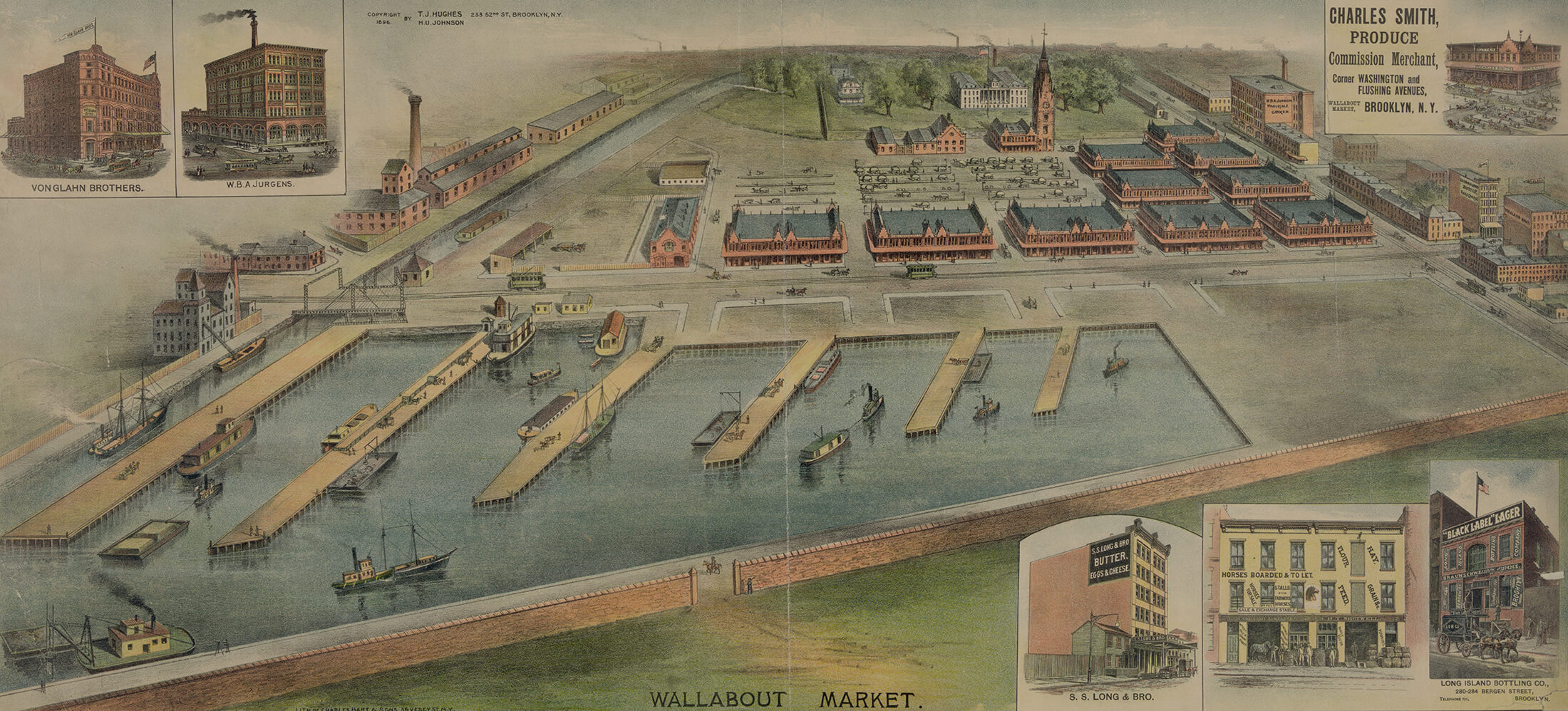
There were two other factors as to why these businesses clustered there. The first was the presence of the Wallabout Market, Brooklyn’s large wholesale meat, grocery, and produce market. Brooklyn’s many edible-related businesses relied on the market and vice versa. More important for the candy manufacturers, Wallabout was also only a hop, skip, and a jump away from Williamsburg’s sugar refineries. Mass amounts of sugar were being produced just around the corner and slightly up river.
Brooklyn’s candy companies can be divided into two time periods: the late 19th and early 20th century and the World War II years and after. Some well-known names started here and eventually moved to other locations, and some didn’t come into being or become popular until the war or just afterward.
New York City’s various industries and crafts were listed in Trow’s Business Directory. These directories can be found at the Center for Brooklyn History as well as online in various libraries and collections. The 1898 directory for Brooklyn has 28 listings for businesses dealing in chocolate and cocoa, chewing gum, and wholesale confectioners. By 1912, the number swelled to 92. That’s almost a hundred companies, big and small, making candies, gum, and chocolates in Brooklyn alone, with dozens more in other boroughs.
Wallabout candy companies
Wallabout was home to several important candy makers. The Rigney Candy Company was located at 68-74 Emerson Place, on the corner of Park Avenue, in a large five-story building now home to a Public Storage facility. Rigney may not be a household name now, but in their day they were the largest manufacturer of rock candy, hard candy, cough drops, and other medicinal hard candies. They manufactured syrups, including pancake syrup. They also manufactured “Rigcole,” a glycerin substitute used in pharmaceuticals and candy. The company was founded in 1893, and this factory was constructed in 1912.
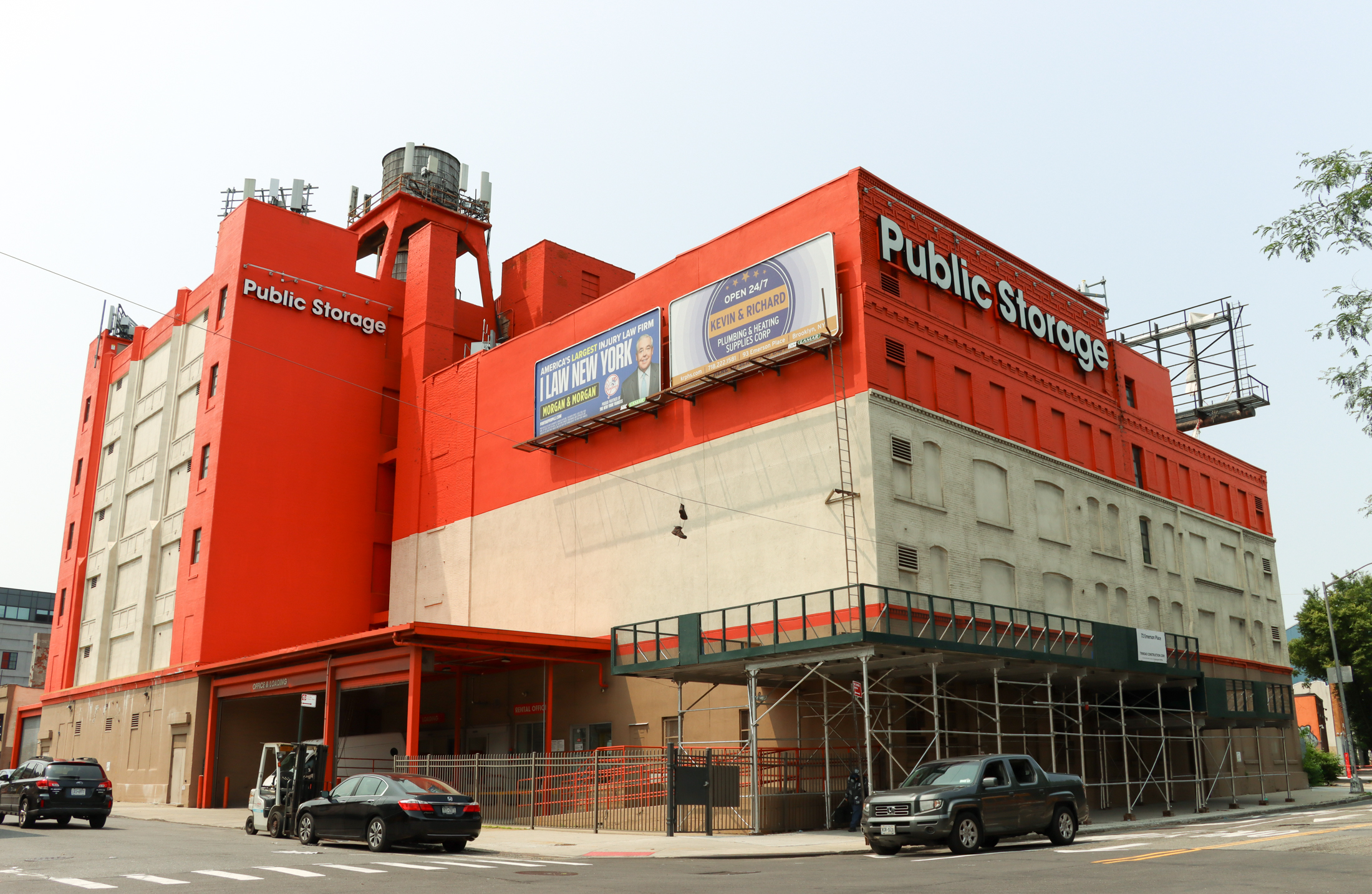
Rigney was very successful in its day, and its stock was traded on the New York Stock Exchange. In 1927, it was embroiled in a huge scandal when it was revealed that the bookkeeper, William Prepiak, had been skimming off the top for six years, and stole over $23,000 in total, which was a lot of money back then. When arrested, he told the police that he lost it all to gambling, horse races, and night clubs. He was easily convicted and, fortunately for the company, it survived that scandal. But the Great Depression took its toll, and the company went out of business in the mid 1930s.
The largest Wallabout candy factory was Rockwood and Company. It was founded in Manhattan in 1886 by Wallace Jones and W.E. Rockwood. They manufactured chocolate products, processing raw cocoa beans and wholesaling cocoa, baking chocolate, chocolate coatings, and their own confections. Their first building in Brooklyn was the former Van Glahn grocery warehouse on the corner of Washington and Park avenues.
As the company grew, they bought the rest of the Van Glahn buildings and then started building new ones. The largest part of the complex was the new factory building on the corner of Waverly and Park, designed by the Parfitt Brothers and completed in 1910. The ground floor showroom was designed by Ernest Flagg. The entire complex took up the length of Park between Waverly and Washington avenues. It was said to be the largest chocolate factory in the state and one of the largest in the nation.
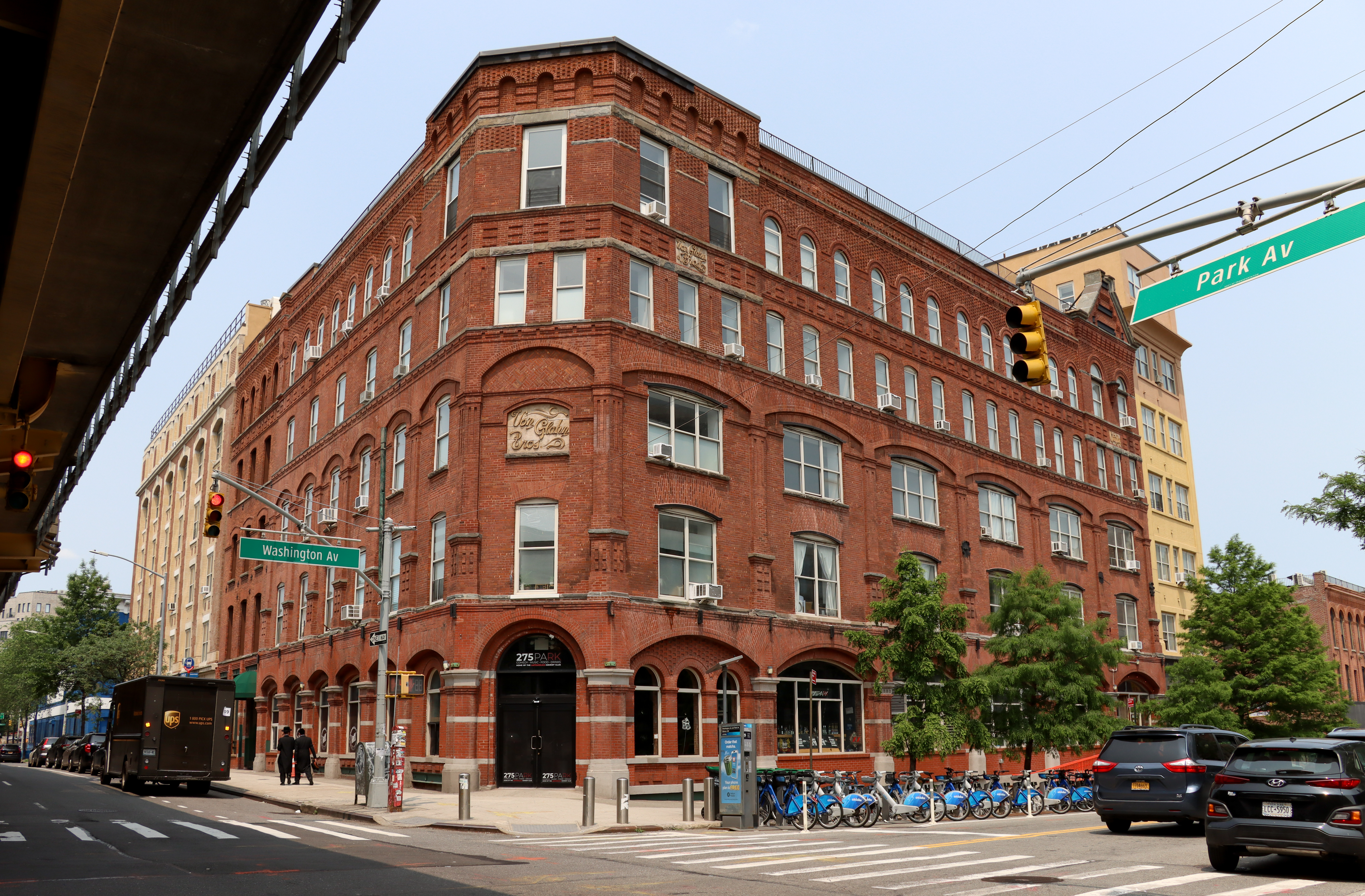
Rockwood brought in tons of cocoa beans for processing. The beans were packed in burlap sacks like coffee beans. Stored until use, hundreds of bags of beans were warehoused in Rockwood’s shipping building. In May of 1919, a fire broke out on the second floor sometime during the night. It burned unnoticed until the next morning, when smoke began pouring out of the second floor. Although the fire department arrived almost immediately, the fire spread, resulting in a three-alarm blaze.
Chocolate wasn’t the only food substance in the building, and as water washed back out into the street, it mixed the melted chocolate with sugar and water. This created a slippery surface for firefighters, but was a gift from the chocolate gods to the hundreds of local children who swarmed over the streets. Somehow word got around that the streets were filled with fudge, and they rushed in, oblivious to the dangers, to scoop up handfuls of the mixture and gorge on it.
In the end, the authorities had to call in truant officers to round up the kids and take them to school. They must have been bouncing off the walls or in a candy coma. The fire was contained in that one building, which was a total loss. The fire caused almost $2 million in damage.
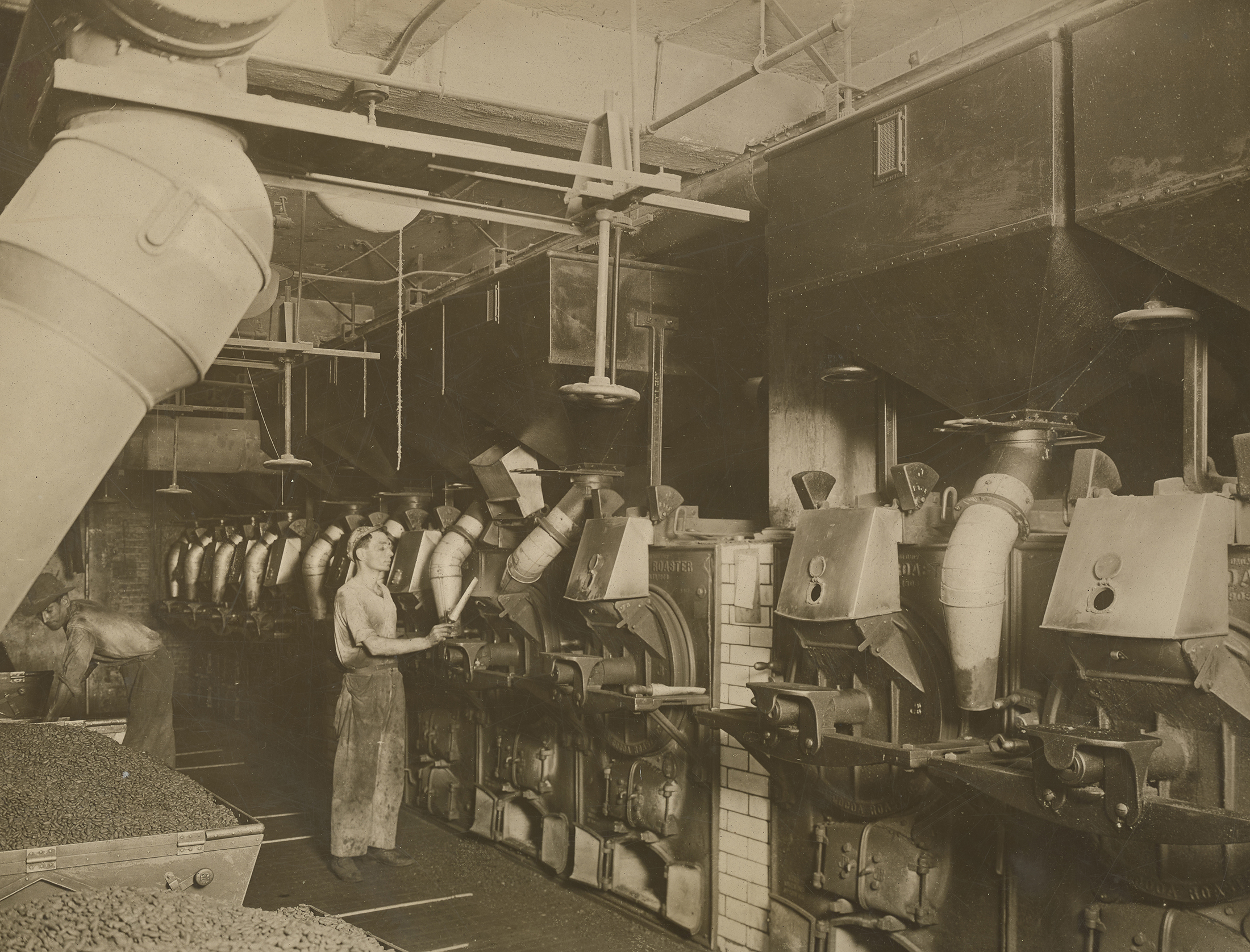
The company was very active with local businesses and schools, sponsoring cooking contests using Rockwood ingredients, of course, and scholarships. They were the first to introduce chocolate sprinkles to the public under the name “Decorettes” in 1919. By the 1950s, their most popular product was chocolate chips. Only Hershey’s in Pennsylvania was bigger than Rockwood.
But a global shortage of cocoa beans and rising prices took its toll on the company. After some slight-of-hand stock manipulation, the firm stayed afloat for a few more years but sold out to the Sweets Company of America in 1957. Sweets manufactured Tootsie Rolls at the factory until it closed in 1967. Tootsie Rolls, created by Manhattan candy man Leo Hirschfeld, were named after his daughter, Clara “Tootsie” Hirschfeld. It too had a long and interesting history. Sweets Co. moved its headquarters and manufacturing to Chicago, where it remains today. The Rockwood factory buildings are now housing.
Bischoff’s Chocolate Company was founded by German immigrant Frederick Bischoff in Manhattan in the 1890s. He moved to Brooklyn several years later, and had factories in Gowanus, at 3rd Avenue and 3rd Street, as well as factories on Ashland Place and Sands Street. His specialties were cocoa liquors and coverings, breakfast cocoa, and chocolate as well as chocolate wafers and nonpareils. The company moved from Wallabout to Ballston Spa upstate in the 1920s and folded three years after Bischoff’s death in 1942. The factory complex is now a landmarked site and used as an office/small business and retail hub.
Working in the candy factories was primarily a union job, especially in the larger companies. The workers were represented by the Candy and Confectionery Workers Union, Local 452. They built a union hall nearby at 315 Vanderbilt Avenue in 1947. There were several strikes against Rockwood and others over the years, and no doubt this union hall was humming. Today it’s an artist’s home and studio.
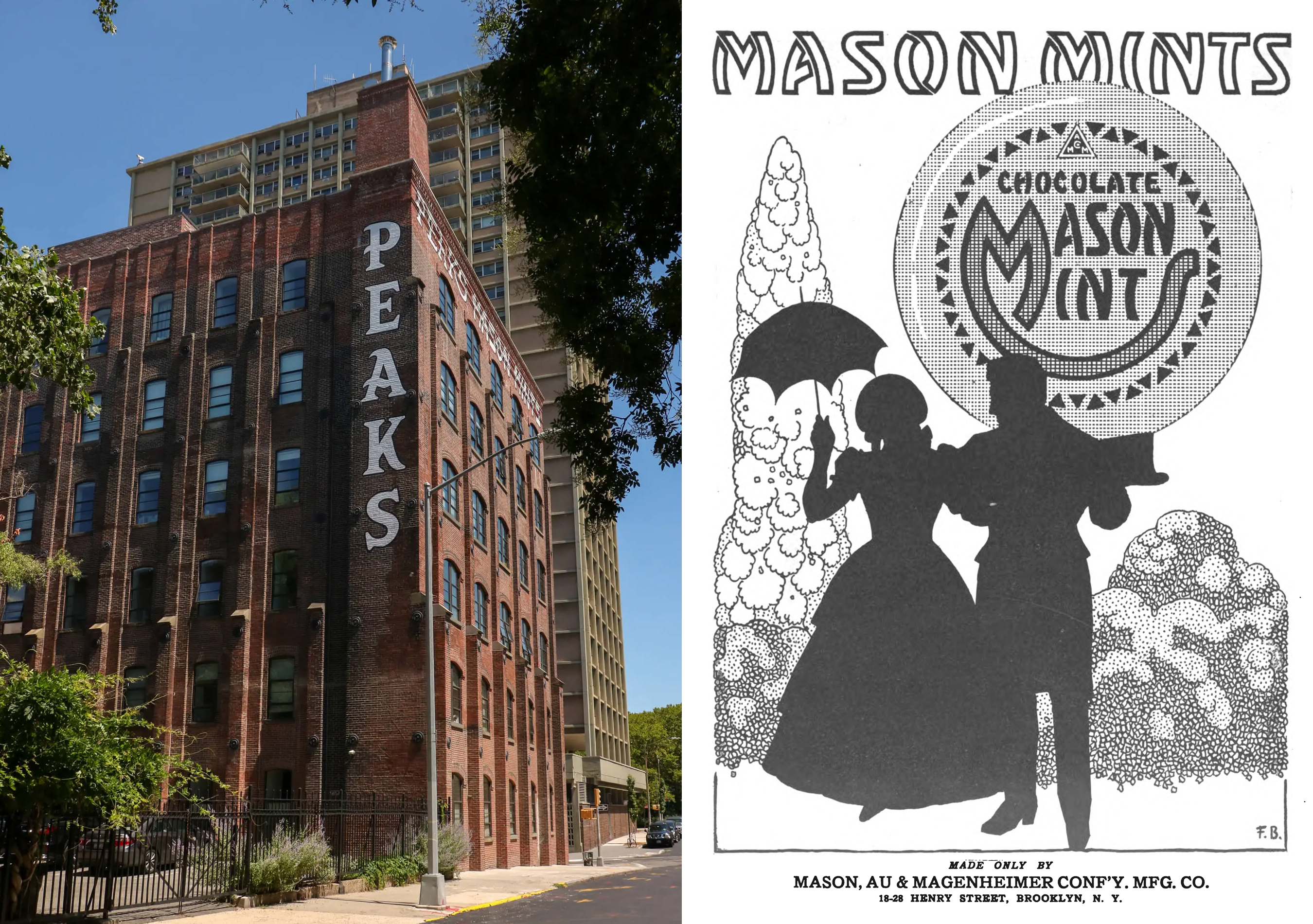
Other Brooklyn brands and factories
The Mason, Au & Magenheimer Confectionary Company produced Mason Mints and other candies in their factory at 24 Henry Street in Brooklyn Heights. The company began in 1864, making their products in a building at 81 Fulton Street. When the company outgrew that facility, they commissioned architect Theobald Engelhardt to design the building on the corner of Henry and Middagh streets, which opened for business in 1892. In addition to their popular Mason Mints, they also made Dots, America’s favorite gum drops, which were introduced in 1945. The company moved to Long Island in 1949. The building is now condos.
Over in Crown Heights, the Pirika Chocolate Company was located at 972 Dean Street, near Classon Avenue. The company was founded in 1898 and moved to this location in 1902. Although completely unknown today, Pirika had its greatest success during World War I when they were contracted by the government to supply chocolate to the troops. Pirika invented a cutting-edge mold that allowed candy makers to work with runnier substances and fill the centers of chocolate and other confections. The company planned on expanding in the area after the war, but Prohibition and mismanagement closed them down in 1925. Advertisements for their products can be found online.

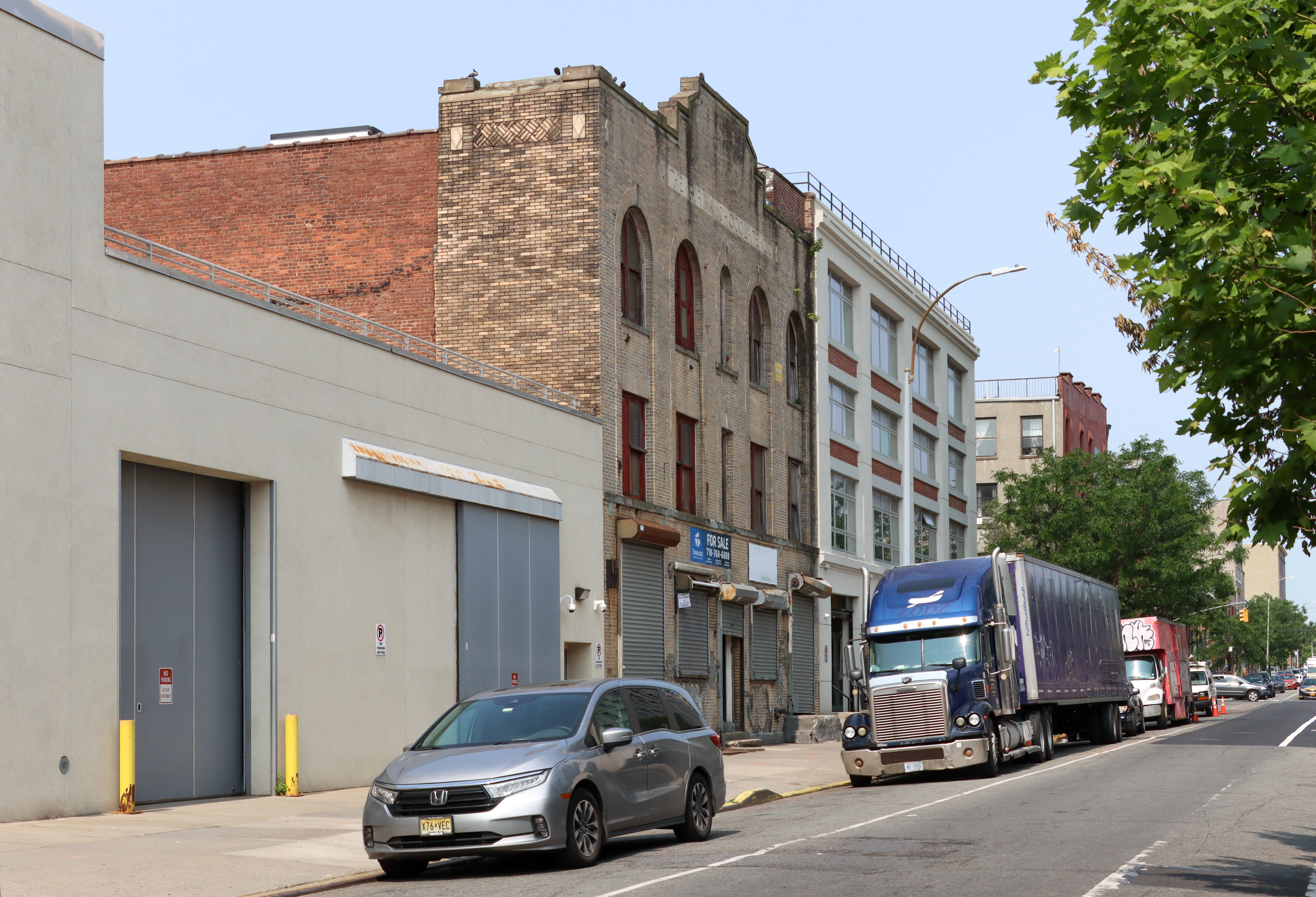
Sunset Park and Bush Terminal
Sunset Park’s Bush Terminal was home to several candy manufacturers during the 1950s and ‘60s. The large factory buildings at the terminal were ideal locations for production. Now and Later fruit-flavored taffy was made here by the Phoenix Candy Company, founded in 1962. A package containing seven square pieces in different flavors was advertised as so good you needed to eat some now and save some for later. The company was sold to Nabisco in 1992 and now belongs to the Ferrara Candy Company. Now and Later is still produced and is still a popular seller.
World Confection Inc. was on the outskirts of Bush Terminal in a large one-story building at 184 30th Street, between 4th and 5th avenues, that was their headquarters until at least 2011. Founded in 1952 by brothers Sam and Leo Cohen, both World War II veterans, the company is still in existence and now run by Sam’s grandson and other family members. They are best known for their “candy sticks,” which are packaged like cigarettes in a box of 24. Although the company has always stated they were not promoting smoking, the sticks are white like cigarettes and are packaged in boxes that closely resembled the boxes of popular brands such as Marlboro and Camel. The company is now located in New Jersey and makes and distributes other nostalgic candies such as Pop Crystals and Sour Dudes. Their candy sticks are still popular, especially with nostalgic candy aficionados.
Chewing gum and kosher candy
Thomas Adams is sometimes called the father of chewing gum. He didn’t set out to be. In the late 1860s he was experimenting with chicle, the gummy sap extracted from Mexican sapota trees. His intent was to invent a rubber substitute, but chicle wasn’t cooperating, and his experiments were a failure. He had once worked as the secretary for Antonio López de Santa Anna, a president of Mexico. He is best remembered by Americans as the villain during the war between Texas and Mexico, culminating at the Alamo.
But before he threw the chicle out in frustration, Adams remembered that Santa Ana would chew on it regularly. He added sugar to the mix, played around with its texture and packaging, and created the most popular chewing gum in 1869, at a time when gum was just being introduced to Americans. In 1870 he invented the first chewing gum making machine, and in 1888, his gum was the first to be sold in vending machines. That year he opened a plant on Sands Street in Dumbo and named his company the American Chicle Company. He was the first to create flavored gum, a licorice gum called Black Jack.
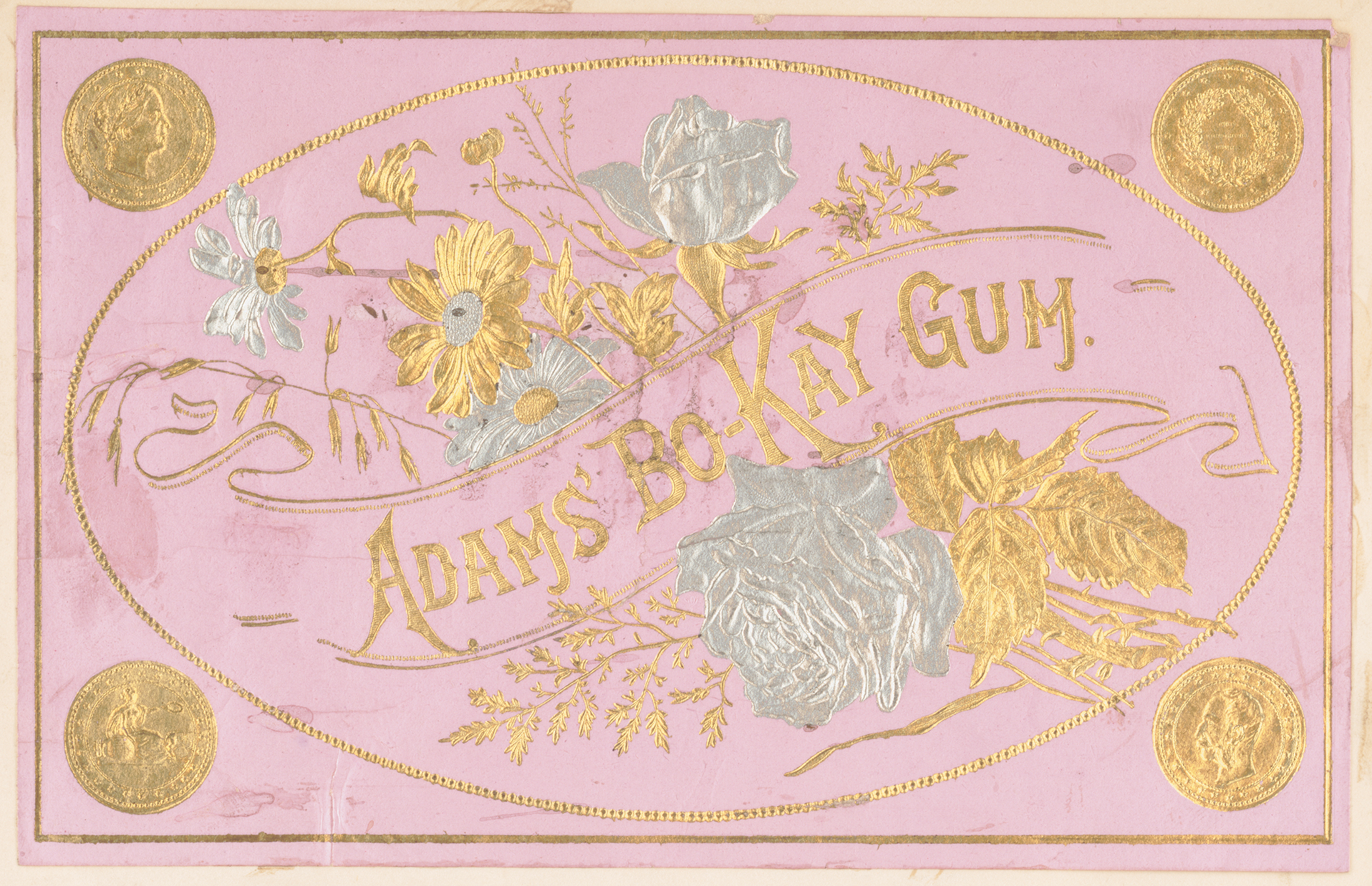
Chewing gum made Adams a very rich man. Park Slopers are familiar with the double mansion he commissioned on the corner of 8th Avenue and Carroll Street. He died in 1905, and the business was taken over by his son Thomas. In 1915 Thomas introduced Chiclets, small pillows of gum covered with a hard sugar coating. The original company has been sold and resold, and other companies have used the name and branding, which can be very confusing, but Chiclets are still out there, still enjoyed by millions.
The Topps Candy Company made their name and fortune with bubble gum. The company was founded in 1938 by four brothers named Shorin and issued its first Bazooka bubble gum wrapped in a patriotic red, white, and blue wrapper in 1947. Bubble gum has a softer consistency and greater elasticity than regular gum and soon became a staple of gum-smacking, balloon-blowing 1950s youth.
In 1953, the company began packaging their individually sold pieces with cartoons printed on the inside of the wrapper starring hero Bazooka Joe. With its eye-patched main character and a cast of regulars, their adventures gained popularity and collectability.
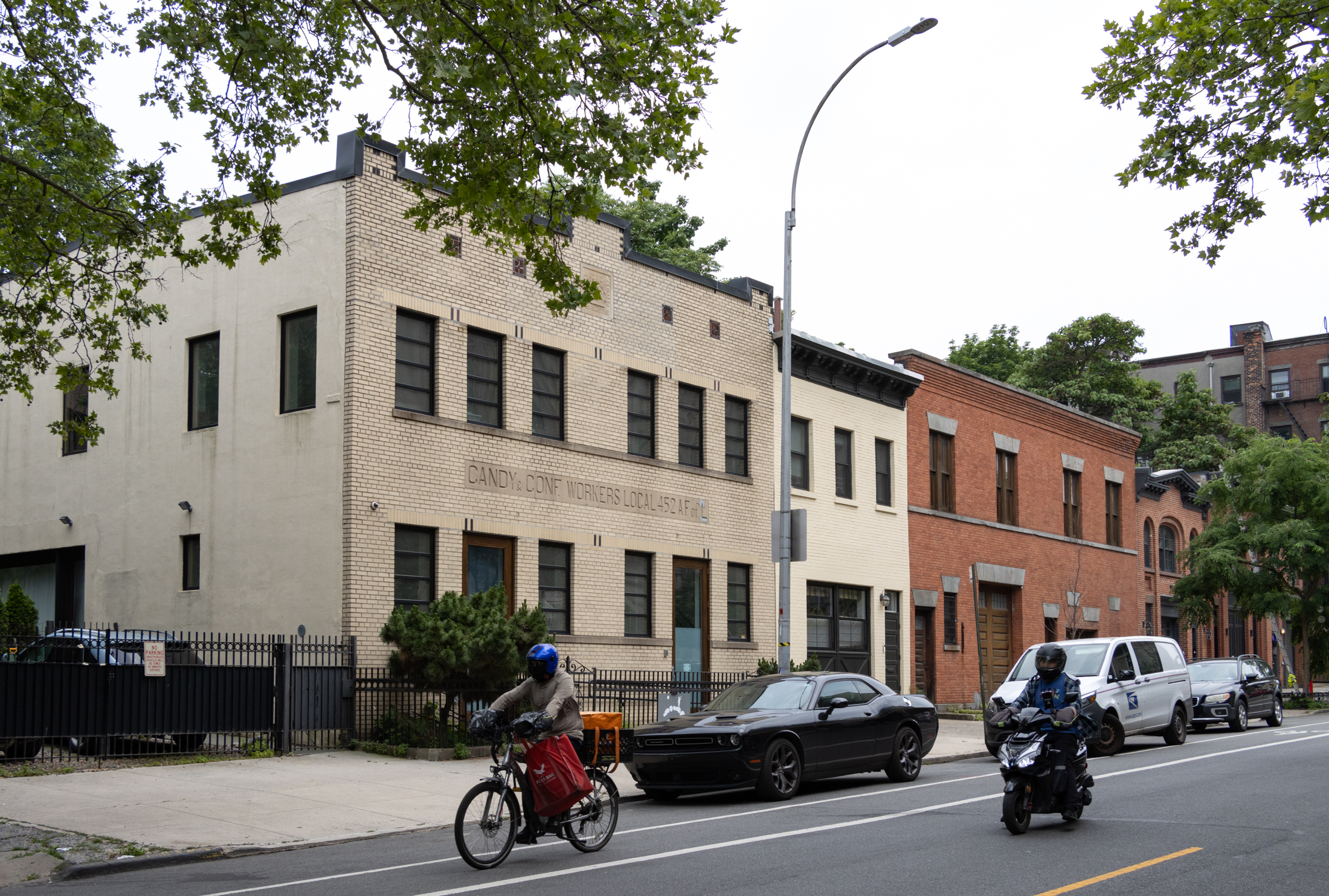
In 1950, the Shorin brothers began including trading cards in their gum packaging, beginning with popular Western characters like Hopalong Cassidy. In 1951, Sy Berger designed the first baseball cards for Topps. His design, with the player’s name, photo, team, and autograph on the front and the stats on the back is still used today. Needless to say, the gum in each package was soon incidental; it was the cards collectors young and old wanted, and sales soared. They’ve been popular ever since. Some cards are now rare and worth big bucks. In 2022, a Mickey Mantle card sold for $12.6 million. Topps also expanded into cards for other sports – football, hockey and basketball.
The company manufactured its products in Bush Terminal until 1965, when it moved to Pennsylvania. The company offices were at 254 36th Street. The company offered public stock and went through several buyouts and a return to private Shorin hands, but in 2007 was purchased by entertainment mogul Michael Eisner. His team began producing Topps trading cards with various themes like Star Wars, Marvel characters, and more. As of 2022, Topps has been owned by Fanatics Inc. The company now markets digital cards as well, and its confectionary business was spun off as Bazooka Brands, which still makes candy and gum.
There were many more confectionary companies that started out in Brooklyn — too many to list in this one article. But one more candy company must be mentioned, because it was one of the most popular to thousands of Americans, and one that remained in Brooklyn. That was Barton’s Candy Company.

Barton’s was founded in 1940 under the name Barton’s Bonbonniere by Viennese chocolatier Stephen Klein in 1938. By 1960, he and his brothers had their products in 3,000 stores across the country and 50 stores in the New York City area alone. Barton’s experienced the greatest company growth in the 1950s and ‘60s. They had three factories in Brooklyn. The largest was located at 80 DeKalb Avenue near Flatbush. Another was on Fulton Street only a block away. The buildings are long gone, but photographs at the Center for Brooklyn History show employees busy at work on the candy assembly line.
Barton’s was the company of choice for many Jewish households and was very active in Jewish activities and causes. Its candies became a major fundraising item for kids in Jewish schools. The products were kosher, and all their retail locations were closed on Saturdays. Among their products were chocolate covered matzos, macaroons, and chocolate Easter bunnies. In 1974, an article in the New York Times noted that while many candy companies were using artificial chocolate in their products, Barton’s was not. They chose to raise prices slightly but vowed they would not compromise their signature melt-in-the-mouth quality.
The company was eventually sold out of the family, and by 2009 was owned by Cherrydale Farms of Allentown, Pennsylvania. They folded and the company was purchased in 2011 by the Bronx-based Bazzini Nuts company, which also purchased the Barricini brand, another kosher candy company and Barton’s main competition. Barton’s candies and chocolates are available through various candy-centric online dealers and on Amazon.
While candy and chocolate companies do still manufacture in Brooklyn, they tend to be gourmet boutique operations. These include Li-Lac Chocolates, whose factory is in Industry City in Sunset Park; Jacques Torres, which manufactures in the Brooklyn Army Terminal in Sunset Park; and Boerum Hill-based Nunu Chocolates. (Mast has moved to Manhattan and Westchester.) Everything has changed, including public tastes in foods and candies. But for about 100 years, Brooklyn was the candy king of the world.
[Photos by Susan De Vries unless noted otherwise]
Related Stories
- The Walled City: Brooklyn Heights’ East River Warehouses
- How Innovator Robert Gair Built an Empire of Boxes in Dumbo
- How the Railroad Brought Meatpacking to Fort Greene
Email tips@brownstoner.com with further comments, questions or tips. Follow Brownstoner on X and Instagram, and like us on Facebook.





What's Your Take? Leave a Comment